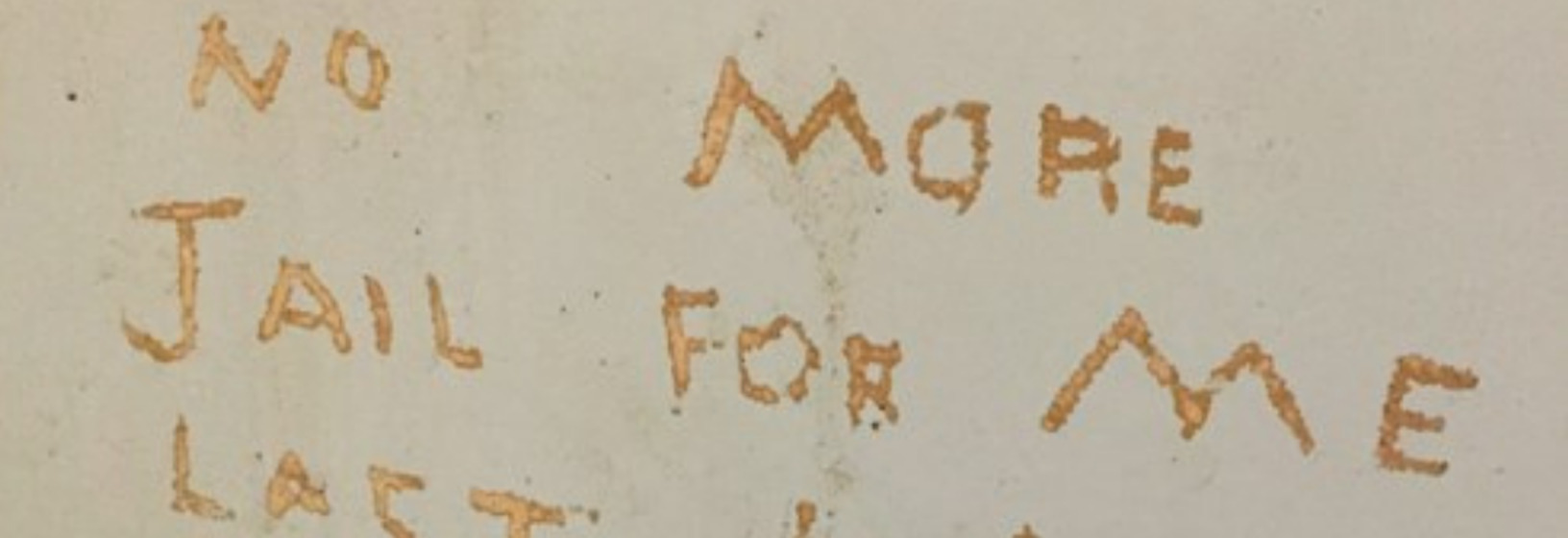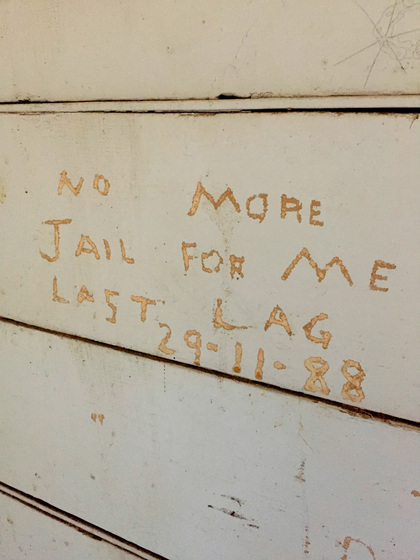As seen in the photos, the structure primarily consists of four cast-iron corner pieces, a doorframe, and a steel floor. Once this skeleton was erected, the thick wooden weatherboards were slotted into place, with each board pre-marked by a roman numeral denoting its position.
However, as with modern-day flat-pack constructions, what seems straightforward on paper is sometimes more difficult in practice. A senior constable, who was present at the time of construction, recalled that local carpenters had major difficulties building the cell, especially as some of the holding rods had been bent.
The location of the cell was similarly problematic. It was first placed at the end of the driveway, where it was more easily supervised, but this also meant it was visible from the street. Friends of prisoners often walked down the driveway to chat to the accused from outside the cell, or sometimes yelled out greetings from the roadside. Unsurprisingly, the local sergeant – whose residence was on the grounds of the police station – found this behaviour less than acceptable.
As a consequence, the cell was moved in 1989 to a position behind the police station and away from easy public access. Here the cell remained in use until 1993, when it was finally deemed unsuitable for holding prisoners due to ‘humanitarian’ and occupational health and safety concerns. Since then, presumably to their relief, prisoners have been held at the Melton Police Station.
In 1996, the cell was officially decommissioned. It was then mostly used for police storage up until 2002, when a renovation of the station meant the cell had outlived all usefulness.
Fortunately, the nearby Blacksmith’s Cottage and Forge (a heritage property owned by Moorabool Shire Council) caught wind of its impending demise and offered to relocate the cell to their property. Keen to avoid dismantling the structure, the cell was carefully ferried by a large forklift to its current home at the rear of the forge.
But it wasn’t until twelve years later that it was restored to its sinister former glory, allowing public access to this unique artefact of Victorian policing history. With the guidance of a heritage architect, great care was taken to ensure it was sympathetically returned to its original state.
In Victoria, there are now only a few portable lock-ups remaining, such as those at Bacchus Marsh, Mansfield and Great Western (pictured below). There are also a number of log lock-ups still in existence (such as the one pictured at Seymour), as well as more durable masonry buildings, usually situated at the rear of police stations around the state.








